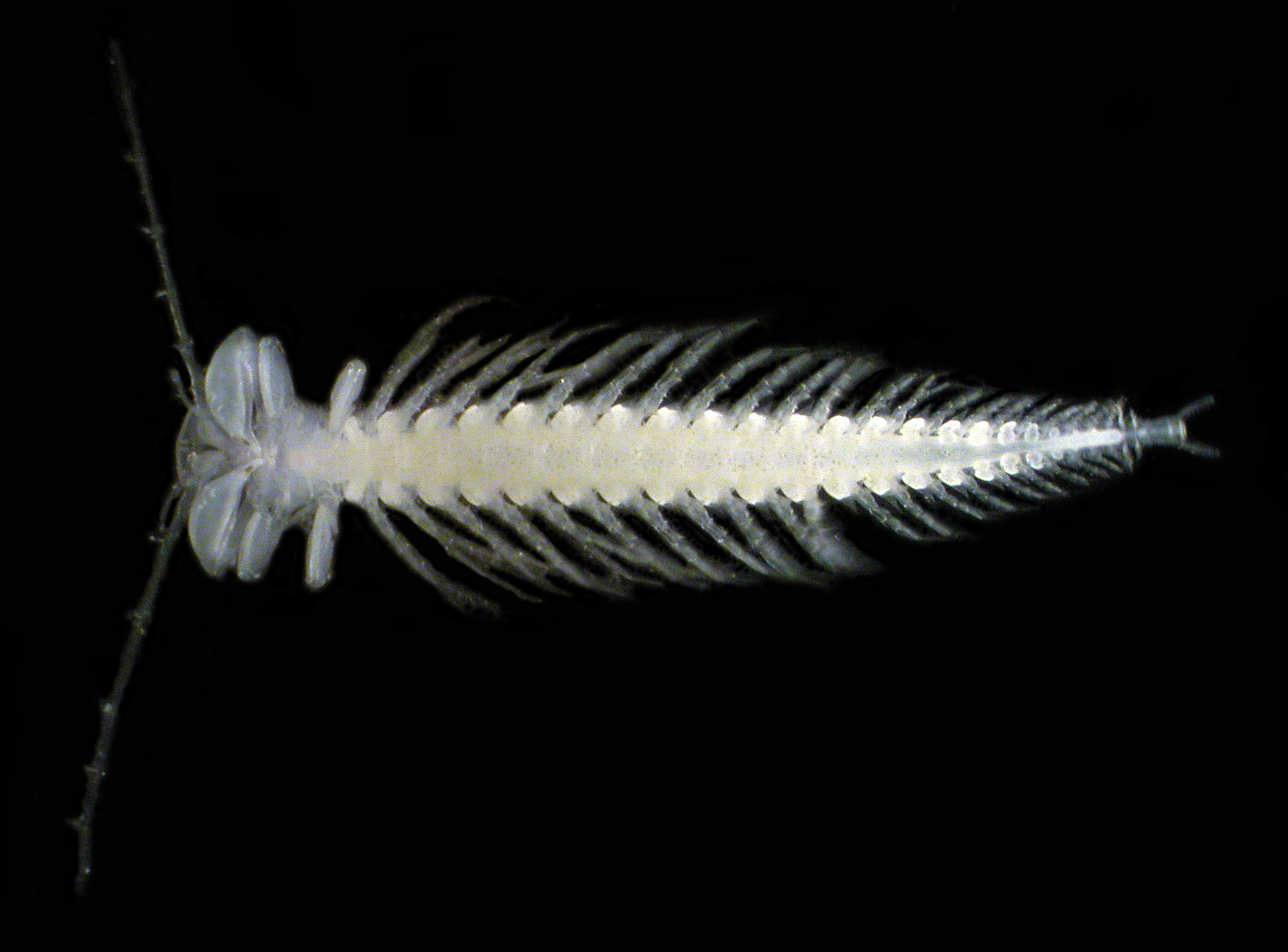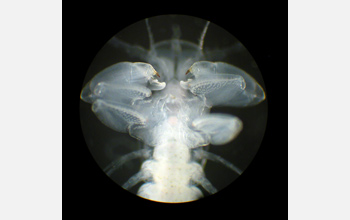Dean's Blue Hole on Long Island in the
Bahamas. At more than 200 meters deep, it's the deepest blue hole cave in the
Bahamas.
The underwater cave was the focus of a
National Science Foundation-supported expedition--"Survey of Anchialine
Cave Fauna of the Bahama Islands" (grant DEB 03-15903)--led by Thomas
Iliffe, a professor of marine biology at Texas A&M University at Galveston.
Anchialine (a Greek word meaning
"near the sea") caves are coastal and form in limestone or volcanic
rock. They flood with seawater and include the longest submerged caves on
Earth. Many previously unknown species of higher taxa live in these caves. Most
do not have eyes or pigment since they live in perpetual darkness.
 Image
2
Image
2This species of remipede, Pleomothra fragilis, newly described in 1989, was found in Oven Rock Cave in the Exuma Cays, Bahamas.
Remipedes are a primitive class of
crustacean believed to be one of the oldest crustacean groups on Earth,
possibly dating back 200 million years to the time of the dinosaurs. Remipedes
look similar to centipedes and have hollow-tip fangs for injecting venom. They
are hermaphrodites.
Image
3
This species of remipede, Pleomothra
fragilis, newly described in 1989, was found in Oven Rock Cave in the Exuma
Cays, Bahamas.
Remipedes are a primitive class of
crustacean believed to be one of the oldest crustacean groups on Earth,
possibly dating back 200 million years to the time of the dinosaurs. Remipedes
look similar to centipedes and have hollow-tip fangs for injecting venom. They
are hermaphrodites.
 These
pictures were taken by Thomas Iliffe, a
professor of marine biology at Texas A&M University at Galveston. Iliffe
was awarded a grant by the National Science Foundation in 2003 to study
anchialine caves in the Bahamas (grant DEB-0315903). Anchialine (a Greek word
meaning "near the sea") caves are coastal and form in limestone or
volcanic rock. They flood with seawater and include the longest submerged caves
on Earth. Many previously unknown species of higher taxa live in these caves.
Most do not have eyes or pigment since they live in perpetual darkness.
These
pictures were taken by Thomas Iliffe, a
professor of marine biology at Texas A&M University at Galveston. Iliffe
was awarded a grant by the National Science Foundation in 2003 to study
anchialine caves in the Bahamas (grant DEB-0315903). Anchialine (a Greek word
meaning "near the sea") caves are coastal and form in limestone or
volcanic rock. They flood with seawater and include the longest submerged caves
on Earth. Many previously unknown species of higher taxa live in these caves.
Most do not have eyes or pigment since they live in perpetual darkness.
To learn more, see the Texas A&M
news story Texas A&M marine experts take discoveries to new underwater
heights; or visit Iliffe's website, Here. [Ref. Koenemann, S. M. Ziegler and
T.M. Iliffe (2008). Pleomothra fragilis n. sp. (Remipedia) from the Bahamas,
with remarks on morphologic reductions and postnaupliar development. Journal of
Crustacean Biology, 28(1):128-136.]
(Date of Image: 2005)
Credit: Tamara Thomsen








No comments:
Post a Comment